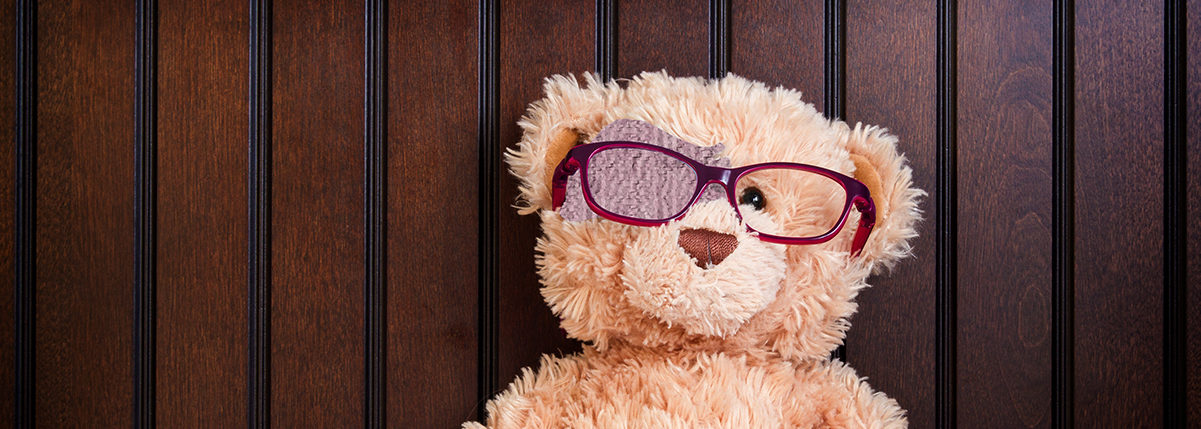Amblyopia
Amblyopia Treatment – Eye Patching Alone is No Longer the Standard of Care
Dan L. Fortenbacher, O.D., FCOVD

Amblyopia, otherwise known as “lazy eye”, is the most common cause of preventable blindness in children. While the loss of vision usually occurs in one eye, rarer forms of bilateral amblyopia do exist. This type of “blindness” occurs in approximately 2 out of 100 healthy children. In amblyopia the loss of vision is not from a disease of the eye but rather the lack of development of the visual brain. Therefore, by definition, a child with amblyopia has healthy eyes, yet the brain can not see.
Therefore, the cause of amblyopia is not due to a disease process. Instead the cause of amblyopia is when there is interference in the infant’s binocular visual development. This means that amblyopia occurs when the visual brain of the baby stops developing normally from the lack of proper “two-eyed” visual input. As a result, even with healthy eye structure, the child is not able to see clearly from the affected eye. So, a child with amblyopia will typically have 20/20 eye sight in one eye and the other eye will be poor. The severity of the amblyopia will be measured by how poor the eye sight is in the affected eye. In addition to poor sight, the child with amblyopia will also have “stereo blindness” or poor depth perception. This only adds to the visual difficulty since the child who is “stereo blind” will not be able to experience the benefits of three dimensional vision.
There can be many causes for amblyopia. But, the underlying mechanism for amblyopia is when something prevents a developing child from seeing with both eyes simultaneously. The most common causes are strabismus (eye teaming failure, such as crossed eyes) and unequal refractive error (example: high farsightedness in one eye while the other eye is normal).
Debunking old myths and practices
Over the years amblyopia was thought to be only treatable if caught before age 6. This myth has been disproven. Current research shows that amblyopia can be treated even in 18 year olds. More research needs to be done, but what we know is that there is “plasticity” in the human visual brain at nearly any age. I have personally successfully treated amblyopes well into their 60’s.
A commonly prescribed form of treatment for amblyopia, yet insufficient by today’s standards (based on Clinical Practice Guidelines), is what is called “occlusion therapy”. Occlusion therapy or “patching” is where the patient wears an eye patch on the “good eye” for typically hours at a time during their waking hours. While the research shows that a child’s visual brain will show improvement in their amblyopic eye sight with a patching regimen, this “old school” approach (when used alone) can be very difficult and disruptive for the developing child to handle. It creates visual disorientation and confusion in spatial judgements. This in turn creates frustration and often emotional upset in the patient. Furthermore, unilateral patching therapy only teaches a patient how to be a “one eyed person” since it does not address the underlying cause for the amblyopia which is the lack of binocular (two-eyed) vision development.
Therefore today’s “best practices” approach for the treatment of amblyopia involves a combination of monocular and binocular training of the visual brain through office-based vision therapy. This is done with a vision therapist under the direct supervision of a Doctor of Optometry along with prescribed home-oriented visual activities to complement the weekly or bi-weekly in-office procedures.
This treatment approach yields the best outcomes, often resulting in normalization of eye sight in the amblyopic eye and the development of stereo vision (3-D vision) for the child. Eye patching alone is no longer the standard of care.